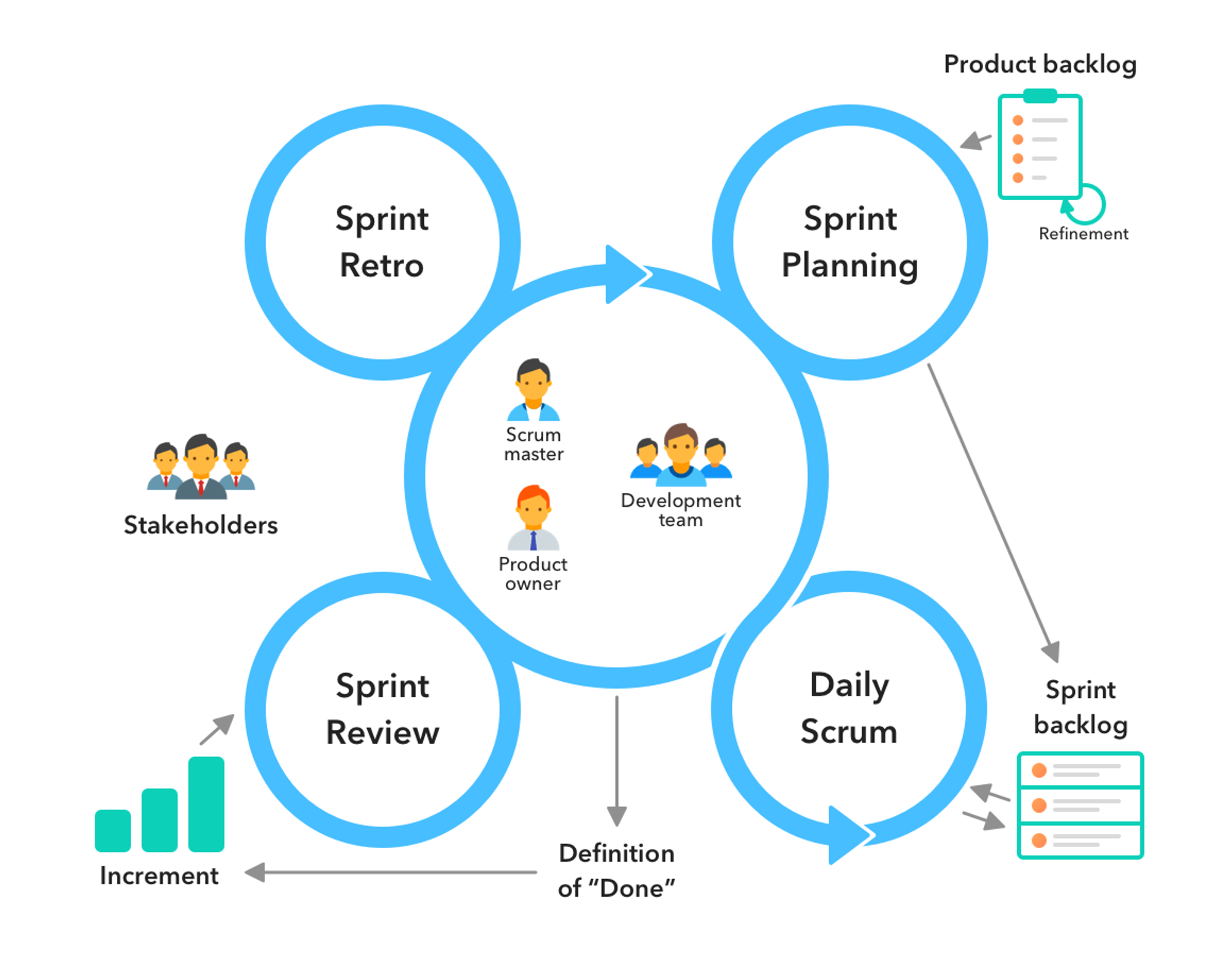Friday, July 25, 2025
Agile, Scrum, and DevOps: Harmonizing Delivery and Innovation in Modern Software Projects

Understanding the Landscape
Agile: A Philosophy, Not a Process
Agile is an iterative, people-centered approach to software development. It emphasizes:
- Customer collaboration
- Working software over comprehensive documentation
- Responding to change rather than rigid planning
Agile frameworks like Scrum, Kanban, and Lean all embody these principles in different ways.
Scrum: Agile in Action
Scrum is a specific framework within Agile, built around short iterations called sprints (usually 2–4 weeks). Teams operate in well-defined roles: Product Owner, Scrum Master, and Development Team. The key ceremonies—Sprint Planning, Daily Standups, Sprint Review, and Retrospective—create transparency and continuous feedback loops.
Scrum works well for:
- Evolving requirements
- Cross-functional teams
- Fast-paced product development

The Role of DevOps in Agile Environments
While Agile focuses on how teams plan and build software, DevOps addresses how that software is delivered, deployed, and maintained.
DevOps practices include:
- Continuous Integration/Continuous Delivery (CI/CD)
- Infrastructure as Code (IaC)
- Automated testing
- Monitoring and alerting
Together with Agile, DevOps helps break down the silos between development and operations teams, leading to faster releases, higher quality, and better stability in production environments.
Tools that Power Execution: Jira & Trello
Jira
Jira by Atlassian is widely regarded as the go-to tool for Agile software teams. It supports:
- Scrum and Kanban boards
- Sprint tracking
- Burndown charts
- Custom workflows and automation
Jira integrates well with CI/CD pipelines and tools like Bitbucket, Slack, and Confluence, making it a powerful hub for Agile + DevOps teams.
Trello
Trello, also by Atlassian, offers a simpler, more visual approach to project management. It’s particularly well-suited for:
- Lightweight task tracking
- Non-technical teams
- Cross-department collaboration
Its drag-and-drop interface, combined with automation (via Butler) and integrations, makes it a favorite for marketing, design, and product management teams.
Best Practices for Integrating Agile, Scrum, and DevOps
- Start with Culture
- Embrace transparency, trust, and shared ownership across all teams.
- Define Roles Clearly
- Ensure responsibilities are well-understood, especially between Scrum teams and DevOps engineers.
- Automate Where It Makes Sense
- CI/CD, testing, and infrastructure provisioning should be automated to reduce manual friction.
- Use the Right Tools
- Select tools that support your scale and workflow. Jira may be better for complex engineering teams; Trello may suit smaller or less technical teams.
- Measure Continuously
- Use velocity, deployment frequency, lead time, and user feedback to iterate and improve.
To Sum Up
Agile, Scrum, and DevOps aren't competing methodologies—they are complementary lenses through which modern teams can plan, build, and deliver software. When used together with the right mindset and tools, they offer a roadmap for not only shipping faster, but also smarter.
At InnoArtis, we help organizations implement and optimize these frameworks so they can scale with confidence and deliver exceptional digital experiences.
